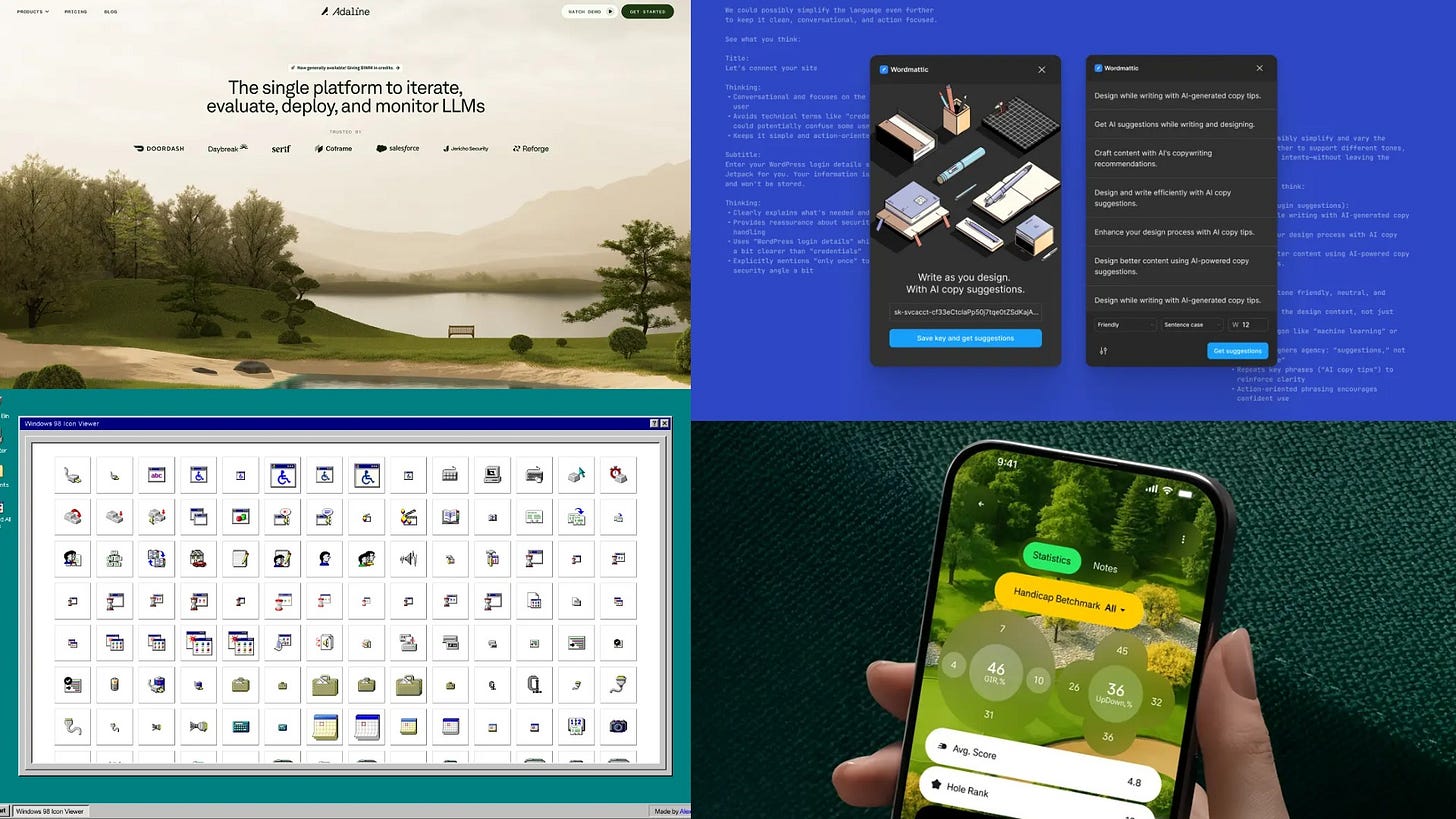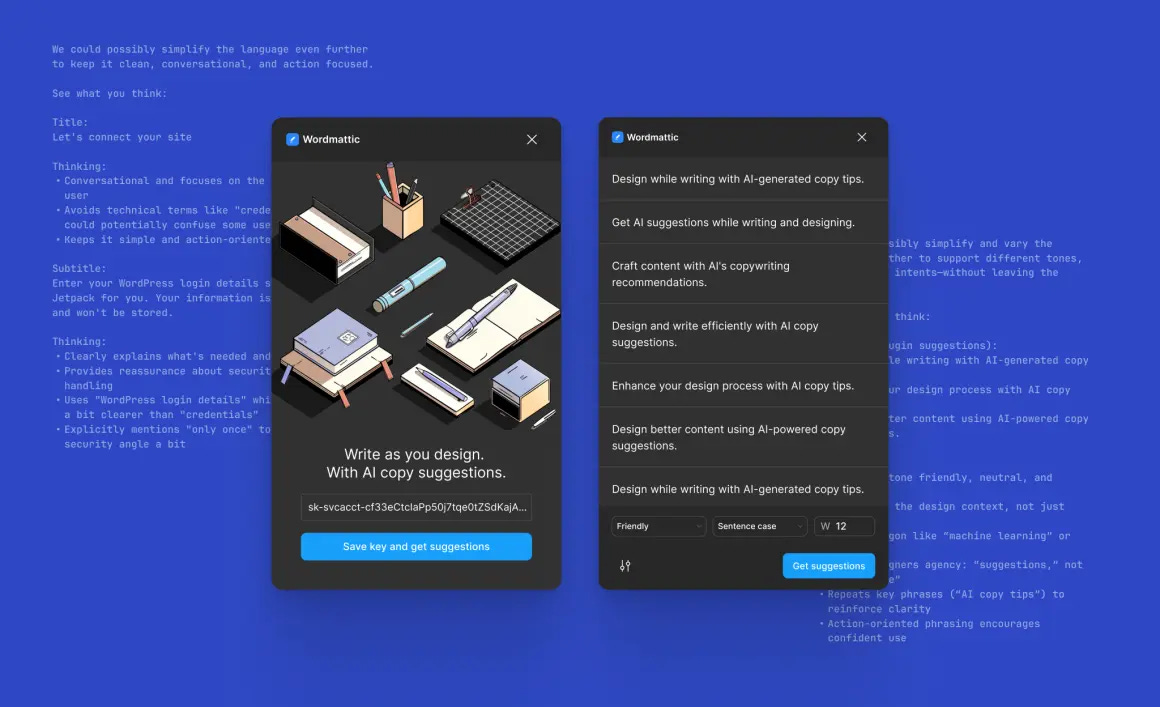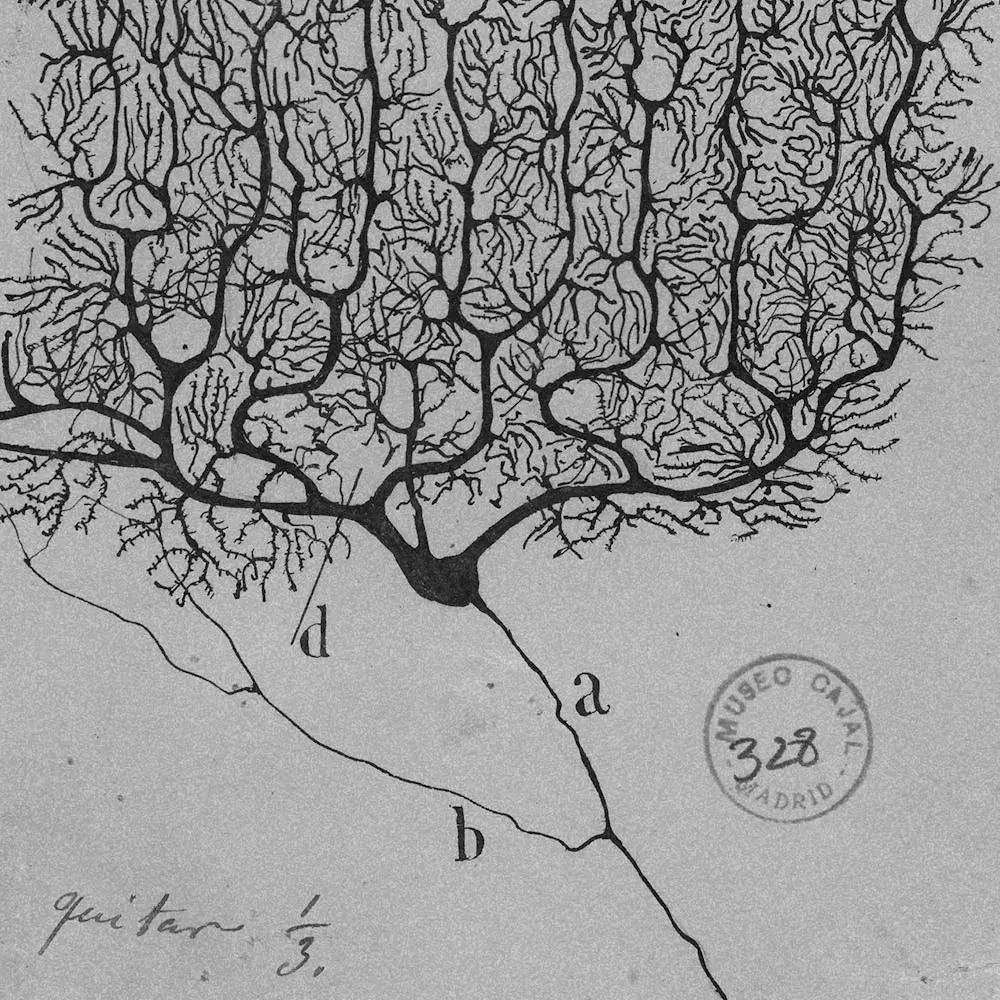Issue 157
Secrets of good magic UI patterns
Hello, dear readers! 👋
In this issue, among other things:
How Automattic writes texts for interfaces
How metaphors help people understand complex or unfamiliar things
Context Engineering. A new approach in the field of AI
Funny plasticine illustrations
Futuristic wooden doll choir
Tips on organizing distributed teams based on your extensive practical experience
…and much more!
Enjoy reading!
🗞 News and articles
The Automattic design team (the creators of WordPress) talked about their approach to writing texts for interfaces. They don't use random fish texts, but write in a way that makes the text useful and makes the interface more convenient.
Main thoughts:
The team writes all the texts at the early stages of creating the layout, and then engages UX editors to adjust the intonation and wording.
On small projects, the designer is responsible for the final version of the text.
In the review, the text is discussed on an equal footing with design solutions.
The team has the following principles: write clearly and briefly, use an active voice, avoid jargon, and address the user directly
To speed up the work, the team created the Wordmattic Figma plugin, which generates ten text options at the touch of a button.
Wordmattic does not replace the designer's thinking, but helps to quickly sort through the wording without leaving the context of the layout.
The plugin can be used freely, but you will need a personal Openair API token.
Louis Charron from the publication DOC told how for centuries metaphors have helped people understand complex or unfamiliar things — from the first ideas about the human structure to the interfaces of computers and smartphones.
Main thoughts:
A good metaphor does not explain, but transforms perception, opening up new ways of thinking.
The computer interface has become accessible to ordinary users thanks to the "paper" metaphor: desktop, folders, trash, windows
Smartphones use physical metaphors without cultural reference: swipe, stretching, "pull to refresh"
The way we formulate a metaphor affects the way we think and the way we understand technology. For example, when we imagine AI as a large printer, we pay attention to its limitations, and if we imagine an artificial mind, then we are talking about differences with humans.
Metaphors are often tied to culture and may differ even in the most basic things. For example, the people of Western civilization imagine the future ahead, in front of them, and the Aymara Indians — behind.
Metaphors can be limiting and revealing. Once, to explain the structure of the brain, the metaphor of a blooming garden was proposed instead of the usual metaphor of a telegraph. This has fundamentally changed the understanding of the structure and plasticity of the brain.
The purpose of a good metaphor is not to show what is, but to indicate what might be. It is metaphors like "the garden" that open up a new vision.
⚡️ Briefly
Adobe has released the Project Indigo application for professional photography on the iPhone. It has AI noise reduction, reflection removal when shooting through glass, as well as focus, shutter speed, ISO, white balance and other settings.







